#solarpowerSystem
Explore tagged Tumblr posts
Text
#flexiblesolarpanel#solarpower#flexiblesolarpanelmarket#solarinverters#solarcontroller#solarsystem#solarsystems#nicesolar#cheepsolarpower#goodsolar#foryou#flexiblesolar#teejoinsolar#flexiblesolarpanels#solarpanels#solar#solarpowersystem#solarbattery#energy#solarpv#flexiblesolarpanelteejoinsolar#sales#environment#china#powergeneration#flexiblesolarpanelteejoin#flexiblesolarpanelkit#flexiblesolarpanelmanufacturers#solarenergy#flexiblesolarpanelefficiency
2 notes
·
View notes
Text
The Rise of Solar Power at the Energy and Alternative Sources Conference 2025
Introduction: Shaping a Greener Future with Solar Power
The International Conference on Solar Power Systems and Modern Technology is set for September 8-9, 2025, in Prague, Czech Republic. This event will focus on the theme “Innovations in Solar Power: Harnessing Technology for a Greener Future.” At the Energy Alternative Sources Conference 2025, experts will explore the latest technologies and advancements in solar power, one of the most promising energy alternative sources. With the global focus on reducing carbon emissions and embracing sustainable practices, solar energy is at the forefront of this transition.

Why Solar Energy is a Key Player in Energy Alternative Sources
As the world seeks to address climate change, the demand for energy alternative sources continues to grow. Solar energy, in particular, has gained popularity for its accessibility and potential to produce clean, renewable energy. The Energy and Alternative Sources Conference will highlight how solar technology is transforming our approach to energy production, with a focus on large-scale solar farms, advancements in photovoltaic cells, and new applications of solar power across various industries.
Sessions at the Energy Alternative Sources Conference 2025
This year’s Energy and Alternative Sources Conference 2025 will feature sessions on various topics related to solar power, including:
Technological Advancements in Solar Panels: Breakthroughs in photovoltaic cells and materials that increase efficiency.
Integrating Solar Power with the Grid: Challenges and solutions for large-scale solar integration.
Solar Power in Urban Areas: Innovative rooftop installations and solar-powered infrastructure.
Solar Energy Storage: Development of high-capacity batteries and other storage solutions.
Solar Power and the Role of Modern Technology
Technological innovation has been essential to making solar power one of the most effective energy alternative sources. Solar panel efficiency has improved significantly over the past decade, and costs have dropped, making it more accessible to a broader audience. The Energy and Alternative Sources Conference will feature discussions on how advancements in solar technology can contribute to sustainable energy systems and create a positive impact on the environment.
One of the most exciting topics at the Energy and Alternative Sources Conferences 2025 is the potential of solar energy storage. High-capacity batteries and new energy storage systems are enabling solar power to be a more reliable source of energy, even during times when the sun is not shining.
Networking and Collaboration Opportunities
The Upcoming Energy Alternative Sources Conference offers an excellent opportunity for industry professionals, researchers, and government representatives to come together and discuss the future of solar energy. Networking sessions will allow attendees to exchange ideas, form partnerships, and collaborate on projects that will drive the adoption of energy alternative sources across the globe.
Conclusion: Join the Energy and Alternative Sources Conference 2025
The Energy Alternative Sources Conference 2025 is more than just a series of presentations; it is an opportunity to make a tangible impact on the future of energy. By focusing on solar power and its potential to transform our energy systems, this conference emphasizes the importance of energy alternative sources in addressing global challenges like climate change. Attendees will leave with a deeper understanding of the advancements in solar technology and be inspired to contribute to a greener, more sustainable future.
#solarpowersystem#solarpowerinstallation#solarpowerplant#solarpowerbank#solar power inverter#solarpanels#solarenergy#green energy#energystorage#energyconferences2025#energymeetings2025#energysummit#globalrenewableenergyconferences#internationalrenewableenergyconferences 2025#energy#globalsummitonsolarenergy#renewableenergy2025#powersystems events#renewableenergyconference
0 notes
Text
HOW AN ON- GRID SOLAR POWER SYSTEM WORKS?

What is an On-Grid Solar Power System?
A grid-tied system, another name for an on-grid solar power system, is one that is directly linked to the local utility grid. This kind of system is made to integrate smoothly with the electrical grid and doesn’t need batteries to store energy. Using solar panels, the system produces power during the day. Any extra energy is sent to the grid, where it generates credits or lowers your electricity costs.
Since on-grid solar systems rely on the grid for backup power, they are inexpensive and simple to maintain.
Components of an On-Grid Solar Power System
Let’s examine the system’s primary parts in more detail before learning more about how it functions:
The essential elements that collect sunlight and transform it into direct current (DC) electricity are solar panels.
Inverter: The inverter transforms the DC electricity produced by the solar panels into AC electricity, which is suitable for usage by household appliances and the utility grid.
A unique kind of electricity meter known as a “net meter” keeps track of both the energy taken from the grid and the excess energy returned to it. Net metering, which enables consumers to get credits for the excess energy they generate, depends on it.
Utility Grid: The electrical grid stores excessthe power that your solar system produces. When your solar panels aren’t producing enough electricity, as at night or on overcast days, it powers your house.
How Does an On-Grid Solar Power System Work?
After learning about the parts, here’s a detailed breakdown of how an off-grid solar system operates:
1. Solar Energy Panels Absorb Light Photovoltaic (PV) cells, which are used in solar panels, are usually mounted on rooftops and collect sunlight during the day. Direct current (DC) is the electrical current produced by this sunshine.
2. DC to AC Conversion using Inverter The inverter is in charge of transforming the direct current (DC) that the solar panels produce into alternating current (AC), which is compatible with the utility grid and the normal power used by household appliances.
3. Energising Your House or Place of Work You can use the converted AC electricity to power your house or place of business. Lights, appliances, and other electrical equipment may operate all day on this pure, renewable energy.
4. Providing the Grid with Extra Energy Your solar system will automatically send any excess electricity it generates to the utility grid if it is used by your home or place of business. This is the application of net metering. The amount of extra energy delivered to the grid is recorded by the net meter, and your utility company will either credit your account or modify your charge accordingly.
5. Utilizing the Grid for Power When your solar panels aren’t producing enough electricity at night or on overcast days, your system will automatically draw power from the grid. This guarantees a consistent supply of power even in the absence of sunlight.
Net Metering: A Key Benefit of On-Grid Solar Systems
An on-grid solar power system’s capacity to take part in net metering is one of its main benefits. Utility companies in many areas provide net metering schemes that allow solar-powered consumers to export excess energy to the grid and receive credits. Your overall electricity bills will be reduced by these credits, which balance future electricity consumption when your solar system isn’t producing enough power.
By ensuring that no energy is wasted, net metering not only lowers power costs but also enables owners of solar systems to optimise the effectiveness of their setup.
Why Choose an On-Grid Solar Power System?
An on-grid solar system could be the best option for your energy requirements for a number of reasons:
Cost-effective: The upfront expenses of on-grid systems are lower than those of off-grid systems since they do not require costly batteries for energy storage.
Efficient: Regardless of the output of your solar system, you will always have access to electricity because the grid serves as a backup power source.
Eco-Friendly: You can lessen your dependency on fossil fuels and your carbon impact by producing your own clean, renewable energy.
Energy Credits: By obtaining credits for the excess energy you generate through net metering, you can drastically lower your electricity costs.
Low Maintenance: Compared to other solar system types, on-grid systems have a simpler design and require less maintenance because there are no batteries to maintain or replace.
An very effective and affordable method of utilising solar energy is through an on-grid solar power system, especially for people who have connection to the utility grid. It should come as no surprise that more homes and companies are choosing this solar option given its capacity to produce electricity, save utility costs, and support environmental sustainability.
An on-grid solar power system provides a simple and effective approach to use solar energy to power your house or company, whether your goal is to lower your electricity expenses or improve the environment. Now is a great time to consider installing an on-grid solar power system if you’re prepared to make the switch to renewable energy!
#OnGridSolar#SolarPowerSystem#SolarEnergy#RenewableEnergy#SolarTechnology#SustainableEnergy#CleanEnergy#GreenEnergy#SolarPanels#NetMetering#SolarInverter#EnergyEfficiency#SolarSolutions#SolarInstallation#GridTiedSolar
0 notes
Text
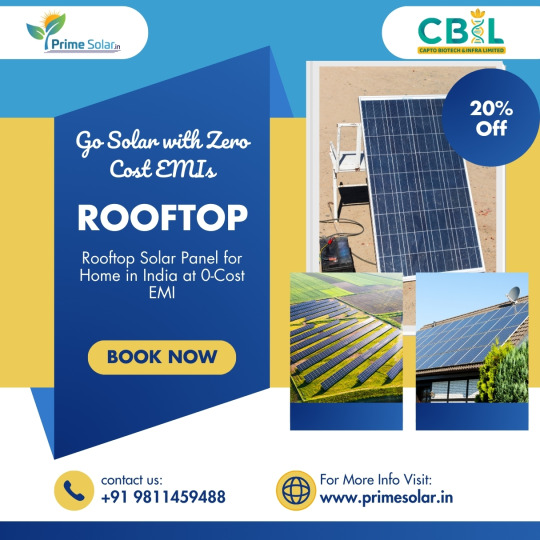
Buy Solar Panels for Home Online at Best Prices in India
Buy solar panels online for home & business in India at the best price. Free delivery is available. View our wide range of solar PV modules & solar plates.
Call/WhatsApp: (+91 9811459488)
#SolarPanelCleaningRobot#SolarPanel#NewEnergy#SolarSystem#EnergyStorage#SolarEnergyStorage#PortablePowerGenerator#PowerGeneration#SolarPowerSystem#LithiumBattery#LiFePO4Battery#Battery#SolarEnergy#Solar
1 note
·
View note
Text

Explore a new realm of camping, our lithium iron phosphate batteries light up the future of your outdoor life! Lightweight and portable, long battery life ensures you can enjoy yourself in nature. If you want to more lifepo4 lithium battery knowledge, just follow me.
0 notes
Text

🌞🔌🏢 Going solar has never been easier with Solar Permit Specialists! 🌞🔌🏢
Are you looking to make the switch to solar energy? Look no further! Solar Permit Specialists provides complete permitting services to make your transition to solar power smooth and hassle-free. 🌞💼📋
👉 Visit our website: https://solarpermitspecialists.com/ to learn more and get started on your solar journey today!
#SolarPower#CleanEnergy#SustainableLiving#GoGreen#SolarEnergy#RenewableEnergy#SolarInstallation#SolarPanels#SolarPermits#GreenLiving#SolarSpecialists#EnergyEfficiency#SolarSolutions#SolarPowerSystem#SaveThePlanet#EnvironmentFriendly
0 notes
Text
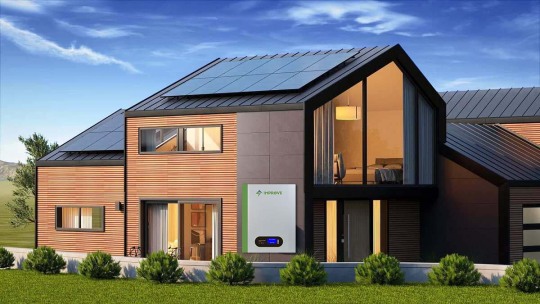
Wall mount battery system can make use of solar energy to store electricity, detects outages and automatically becomes your home's energy source when the grid goes down. It will be a good home energy storage system if you live in an area with unstable voltage.
#SolarPowerSystem#HouseholdEnergyStorageSystem#wallmountbatterybackup#wallmountedbatterystorage#wallmountupsbatterybackup
1 note
·
View note
Text
Solar Panel Efficiency: Solving the Puzzle of Solar Panels
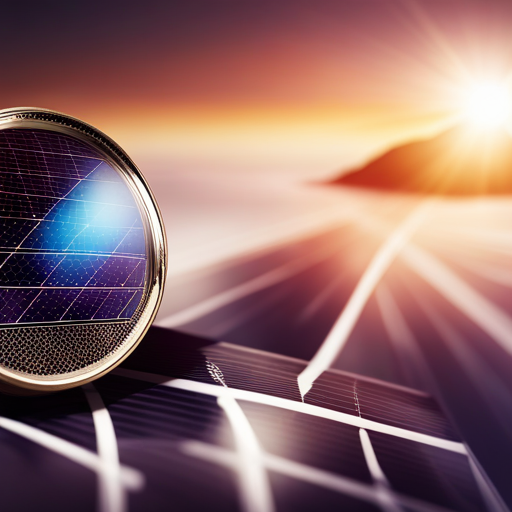
Solar panels have become a symbol of optimism in the search for sustainable energy. These gadgets, seen on roofs and fields worldwide, can harness the sun's energy and turn it into electricity. And yet, how do they accomplish this feat? Why, then, are they only 20% effective? This tutorial will answer these questions and many more as it delves into the intriguing realm of solar panel efficiency. We'll delve into the research behind solar panels to learn more about how they work, what limits their efficiency, and where we could go from here. So, let's set out on an adventure to uncover the truth about solar panel efficiency.
An in-Depth Look at Solar Panel Efficiency
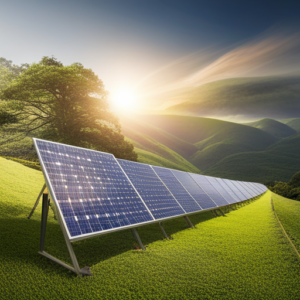
Solar Panel Efficiency The Efficiency of Solar Panels: An Overview The efficiency of a solar panel is its ability to convert energy from sunshine into a valuable form of energy. It's important because it affects how well and cheaply a solar power system works. A solar panel's efficiency indicates how much power it generates from a given quantity of sunshine. But what exactly does "20 percent efficiency" entail when applied to solar panels? This implies that the panel can only convert 20% of the sunlight falling on it into usable power, while the other 80% is either reflected or dissipated as heat. How Solar Panels Work: The Science Photovoltaics is the underlying technology behind solar panels. Semiconductor material, often silicon, in the solar panel soaks up the sun's rays. The silicon's electrons are jarred free as a result. The liberated electrons are collected and used to generate electricity. The quality of the semiconductor, the brightness of the sunlight, and the panel's orientation all contribute to the process's overall efficiency.
Exactly why do Solar Panels Only Produce a 20% Yield?
Science Behind Harnessing Solar Power Semiconductor materials' physical features set a ceiling on solar panels' efficiency. The most prevalent material, silicon, is limited in the light wavelengths it absorbs. This implies that a significant fraction of the sunlight that strikes a silicon solar panel is either reflected or converted to heat rather than electricity. This is a significant factor in why the efficiency of solar panels is only about 20%. The Efficiency of Solar Panels and it is Limiting Factors. Other variables may lower a solar panel's efficiency in addition to the constraints of the semiconductor material. For instance, when temperatures rise, the efficiency of solar panels decreases. This is because a rise in temperature makes the semiconductor's electrons flow faster, making it more difficult to trap them and convert them into electricity. This is why solar panels are often positioned at an angle away from the roof for cooling. In addition to shade from trees and other buildings, dust and debris on the panel's surface may diminish efficiency by obstructing sunlight.
Does 100% Efficiency Exist for Solar Panels?
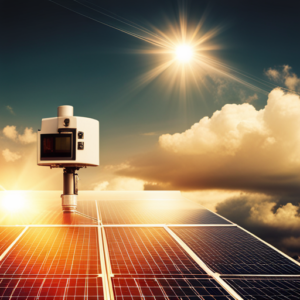
Does 100% Efficiency Exist For Solar Panels? Efficiency of Solar Panels, Up to Their Thermodynamic Limit The quick response is "No." The laws of thermodynamics limit the highest solar panel efficiency, which regulates energy conversion processes. This threshold, the Shockley-Queisser limit, is about 33 percent for solar panels made from silicon. A silicon solar panel can only convert roughly a third of the sunlight that reaches it into power, even under ideal circumstances. Quantum Physics' Impact on Harvesting Solar Power Quantum physics presents exciting potential for increasing solar panel efficiency beyond the thermodynamic limit. There are some exciting prospects for increasing the efficiency of solar panels that may be gleaned from quantum physics. The efficiency of solar panels may be significantly improved, for instance, if they could use "multiple exciton generation" to produce many electrons from a single photon of light. However, more development of this technology is required before it can be used in a commercial setting, which might take many years or even decades.
The Quest for Greater Efficiency
The Increasing Effectiveness of Solar Panels Over Time Technology and materials science improvements have led to a steady rise in solar panel efficiency. Panel efficiency was below 15% in the early days of solar electricity. Currently, available solar panels have an efficiency of above 22%. Improvements in solar cell design and manufacture, advancements in semiconductor materials, and new technologies like thin-film solar cells and concentrator photovoltaics have all contributed to this efficiency boost. Improvements in technology have led to more efficient solar panels. The efficiency of solar panels is rising thanks to many cutting-edge technological developments. New semiconductor materials like perovskite are being used, and "multi-junction" solar cells are being developed to absorb a broader light spectrum. Absorb as much of the sun's spectrum as possible, multi-junction solar cells are built using numerous layers of semiconductor materials. Consequently, they can generate more power from the sunlight on them.
Will Solar Panel Efficiency Increase to 30%?
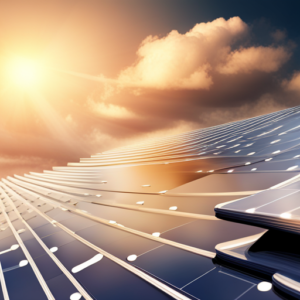
Will Solar Panel Efficiency Increase To 30%? Solar Panels with High Efficiency and Their Future Multi-junction panels and those constructed from novel materials like perovskite have the potential to surpass the Shockley-Queisser limit, which establishes a theoretical maximum efficiency of roughly 33% for single-junction silicon-based solar panels. Within the next decade, according to some experts, solar panels with an efficiency of 30% or more may be accessible commercially. Achieving this efficiency level would be a huge step forward since it would lower the price of solar electricity and make it a more competitive option against fossil fuels. Efficiency Improvements in Solar Panels: Recent Studies A lot of study is being put into improving the efficiency of solar panels right now. Scientists and engineers from all around the globe are constantly exploring the limits of what is possible by trying out new materials, designs, and production methods. Perovskite solar cell development, nanotechnology for enhanced light absorption, and innovative solar cell layouts that can absorb more of the sunlight that falls on them are some of the most promising areas of study.
Which Solar Panels Have the Highest Efficiency?
The Efficiency of Solar Panels Breaks All Previous Records. Researchers at the National Renewable Energy Laboratory (NREL) in the United States have produced a multi-junction solar cell with an efficiency of 39.2%, setting the current record for solar panel efficiency. However, this is just a record in the lab; commercial solar panels have yet to reach these levels of efficiency. Currently, the highest efficiency commercial solar panels on the market are approximately 22-23% efficient. Efficiency Improvements in Solar Panels Solar panels with ever-increasing efficiency as research proceeds and new technologies emerge. While perfect solar panels are theoretically impossible owing to physical constraints, the future of solar panel efficiency seems promising. Solar energy is becoming a more competitive energy source as efficiency continues to rise, and it might play a significant part in our energy future.
Solar Panels: Characteristics and Performance
Solar Panel Types: A Comparison You may choose from many different solar panel styles, each with advantages and disadvantages. Separate efficiency scores for each. Monocrystalline solar panels, typically black and have an efficiency of 15% to 20%, are now the most efficient form of solar panel commercially accessible. Polycrystalline solar panels are less expensive than monocrystalline panels despite their blue tint and somewhat lower efficiency. Thin-film solar panels are the most flexible and lightweight but have the lowest efficiency. Comparison of Common Solar Panel Manufacturers' Efficiency There is also a wide range of efficiency ratings across solar panel manufacturers. The most efficient solar panels on the market, with efficiencies of over 20%, are made by companies like SunPower and LG. Affordable alternatives with somewhat lower efficiency may be found from manufacturers like Canadian Solar and Trina Solar.
Influencing Factors on Solar Panel Performance
Temperature's Role on Solar Panel Performance Since solar panels lose efficiency as their temperature rises, it is common practice to provide space between the panel and the roof so that hot air may escape. Especially in warmer locations, this temperature coefficient should be considered while selecting solar panels. The Importance of Direct and Reflected Sunlight to Solar Energy Generation The efficiency of solar panels is also affected by the amount of sunshine they receive and the direction from which it comes. When the sun is at its highest position in the sky and beaming directly onto the panels, it generates the most tremendous power. That's why many people in the Northern Hemisphere put solar panels on their south-facing roofs and the opposite in the southern hemisphere on their north-facing roofs. Solar tracking devices may be employed to boost efficiency further to shift the panels in the sun's direction throughout the day.
Improving the Performance of Solar Panels
Increasing Productivity Using Solar Trackers Increase the efficiency of solar panels. Solar trackers are used to move the panels to track the sun as it travels across the sky. Solar trackers may be divided into two categories: those that follow the sun from east to west and tilt to keep up with the sun's arc across the sky. Although solar trackers may boost the efficiency of a solar power system by as much as 30%, they are also more costly and need more maintenance than permanently installed solar panels. Effects of Anti-Reflection and Dual-Faced Designs Bifacial designs may catch sunlight reflected off the ground onto the rear of the panel, further boosting efficiency. At the same time, anti-reflective coatings can assist solar panels in absorbing more sunlight and converting it into power. Anti-reflective coatings enable solar cells to absorb more light by decreasing the light reflected from their surfaces. However, bifacial solar panels can harness energy from direct sunlight and reflected light due to their double-sided light-absorbing construction.
Efficiency and Expense of Solar Panels
Cost-Effectiveness Analysis of Solar Panels Solar panels with better efficiency may generate more power but at a higher cost. Therefore, it is essential to weigh whether or not the extra power produced by high-efficiency panels is worth the more excellent initial investment. Do the Benefits of Greater Efficiency Always Justify the Price? Over the panels' useful lifespan, the savings on power costs often exceed the initial investment in the more expensive high-efficiency solar panels. However, this is conditional on many variables, such as the price of power where you live and the quantity of sunshine available there. High-efficiency solar panels are a fantastic option for places with high power costs and plenty of sunshine.
How Efficiently Solar Panels Can Power Your House
What Effect Does the Efficiency of Your Solar Panels Have on You?
Your Monthly Electric Bill and the Performance of Your Solar Panels
The more power your solar panels can generate, the less you'll have to spend on your monthly energy bill. This is paramount if you reside in a region where power is expensive. By switching even a percentage of your energy use to solar power, you may save your annual electricity costs by hundreds, if not thousands, of dollars. Which Solar Panels Are Best for Your House? Before making a final purchase, you should weigh the solar panels' efficiency against their price, their lifespan, and the quantity of sunshine available where you live. You should consult a solar contractor to determine which panels work best for your home. They will evaluate your home's solar potential, determine the size of the solar power system you need, and provide product and brand recommendations based on your needs.
The Effects on the Planet of Inefficient Solar Panels
Solar Energy's Impact on Reducing Carbon Emissions Solar panels may play a significant part in reducing the effects of climate change by turning sunlight into power without releasing greenhouse gases. The better the efficiency of the panels, the more power they can generate and the less of an impact they will have on the environment. Improving Solar Panel Efficiency and Its Impact on the Environment Compared to less efficient panels, higher-efficiency solar panels generate more power from the same amount of sunshine, reducing your reliance on fossil fuels and overall carbon footprint. If you want to help the world fight to prevent climate change, one thing you can do is put high-efficiency solar panels on your house.
The Solar Panel Efficiency, Worldwide
Solar Energy's Impact on Securing Energy Self-Sufficiency By harnessing the sun's energy, nations may lessen their reliance on foreign fossil fuel imports and strengthen their energy independence. The greater the efficiency of their solar panels, the more money they will save using solar energy. The Importance of Solar Energy to the Economy and the Creation of New Jobs The solar sector can contribute significantly to employment and economic growth. With the efficiency of solar panels increasing and the price of solar power decreasing, the solar energy sector is expected to continue expanding, creating new employment and economic stimulus for countries all over the globe.
Efficiency Improvements in Solar Panels
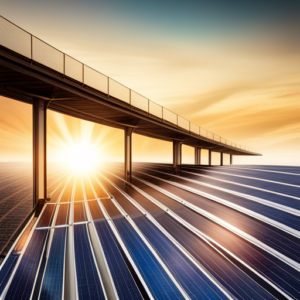
Improving The Performance Of Solar Panels Perovskite Cells and Other Solar Energy Breakthroughs The efficiency of solar panels might be significantly improved in the future with the help of new technologies like perovskite solar cells. There is much hope for the future of solar energy in the form of these technologies, which are still in the early phases of development. The Future of Solar Power in the Next Decades The efficiency of solar panels is expected to increase over the next several decades because of continued research and development. As it does, solar energy will play a more prominent role in our energy system, allowing us to cut emissions that contribute to global warming.
The Effectiveness of Solar Panels, Final Thoughts
While there is much to learn about solar panel efficiency, we must do so. The extent to which we can save money on our power bills, lessen our influence on the environment, and increase our energy independence depends on our solar panels' efficiency. Increasing solar panels' efficiency will be crucial to realizing solar power's full potential. It is reasonable to expect solar energy to assume an even more central position in our daily lives and the global economy in the not-too-distant future, thanks to the prospects offered by emerging technologies and the unrelenting pursuit of innovation. Read the full article
#ClimateChangeMitigation#EnergyIndependence#FutureofSolarEnergy#Photovoltaics#RenewableEnergy#SolarEnergy#SolarIndustry#SolarPanelEfficiency#SolarPowerSystem#SolarTechnology
0 notes
Photo

DIY 400 Watt 12 volt Solar Power System Beginner Tutorial: Great for RV''s and Vans! *Part 1*
0 notes
Text
Significant Problems Encountered by Renewable Energy
Utilities Business Review: Carbon emissions are primarily responsible for global warming. As a result, many efforts have been made to increase its use.

1 note
·
View note
Link
Is your electricity bill with solar panels not as low as you'd expect or suddenly high? Here's what you need to know about solar performance issues.
0 notes
Text
5 Kilowatt Solar Panel Price in India: A Comprehensive Cost Guide
In an effort to lower electricity costs and improve the environment, a growing number of Indian businesses and homes are considering installing solar panel systems. The 5-kilowatt (kW) solar panel system is one of the most popular sizes for home use. This post will explain the cost and savings potential of a 5 kW solar panel system in India, as well as the elements that influence the system’s price.
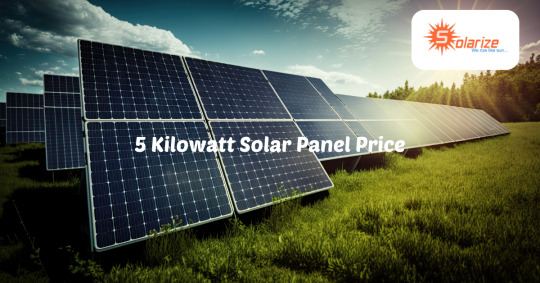
What is a 5 Kilowatt Solar Panel System?
Depending on the location, the type of weather, and the quality of the panels, a 5 kW solar panel system can provide 20 to 25 units of electricity each day. This system is perfect for medium-sized homes or small businesses, as it can produce approximately 7,000 to 9,000 units of electricity annually. It can run a number of home equipment, including lighting fixtures, refrigerators, and air conditioners.
5 Kilowatt Solar Panel Price in India: A Breakdown
A 5 kW solar panel system’s cost in India might vary based on a number of factors, such as the kind of panels, the inverter’s quality, installation expenses, and the system’s location. This is an overview of the costs:
Solar Panels: The majority of the total system cost is attributed to the cost of the solar panels. In India, solar panels typically cost between ₹22 and ₹30 per watt. The cost of the panels for a 5 kW system is between ₹1,10,000 and ₹1,50,000.
The inverter is an essential component that transforms the direct current (DC) produced by the solar panels into a usable alternating current (AC). Depending on the manufacturer and technology, a high-quality inverter for a 5 kW system may cost anywhere from ₹25,000 to ₹50,000.
Mounting framework: The solar panels are firmly mounted on your rooftop using the mounting framework. The price could vary from ₹10,000 to ₹20,000 based on the design and material used.
Electrical components and wiring: This refers to all of the cables, connections, and other parts of the electrical system that are needed for installation. Usually, the price ranges from ₹10,000 to ₹15,000.
Installation Fees: To guarantee the system runs effectively and safely, professional installation services are required. A 5 kW system typically costs between ₹15,000 and ₹30,000 to install.
Miscellaneous Costs: These could add an extra 10,000 to 15,000 to the overall cost. They could include taxes, transportation, and maintenance fees.
Total Estimated Cost: Including all of these, a 5 kW solar panel system in India typically costs between ₹1,70,000 and ₹2,30,000 in total.
Factors Affecting the Price of a 5 kW Solar Panel System
Several factors can impact the price of a 5 kW solar panel system. Here are some of the most significant:
Solar panel types: The cost and efficiency of monocrystalline, polycrystalline, and thin-film panels varies. The most costly and efficient solar panels are monocrystalline ones. In India, polycrystalline solar panels are more common and more reasonably priced.
Improved Durability and Optimal Energy Conversion are two benefits of a high-quality inverter. While more expensive, advanced inverters with clever monitoring capabilities provide long-term dependability.
Complexity of Installation: The layout and state of your rooftop may have an impact on installation expenses. For instance, uneven or inclined roofs may call for additional structures, which would raise the cost of materials and labor.
4. Government Subsidies: You can be qualified for federal or state government subsidies, depending on your state. These have the potential to drastically lower your solar installation’s total cost.
Return on Investment (ROI) and Savings
Over time, purchasing a 5 kW solar panel system might result in considerable financial gains. A 5 kW system may supply around 80–90% of the electricity needed by a typical family that uses 500–600 units per month. This can save you anywhere from ₹6,000 to ₹8,000 a month on electricity, depending on your state’s rates.
You can anticipate a payback period of approximately 5 to 7 years over the system’s lifespan, which is typically 25 years. Long-term savings result from the fact that all future electricity generated is effectively free once the system has paid for itself.
Government Incentives and Subsidies for Solar Installation
The Indian government, through initiatives such as the Ministry of New and Renewable Energy (MNRE), provides a range of incentives to promote the use of solar energy. Subsidies of up to 40% for systems up to 3 kW and 20% for systems between 3 kW and 10 kW are available to residential customers who install grid-connected solar systems.
Furthermore, a few jurisdictions provide extra incentives or net metering benefits, which allow customers to sell excess electricity back to the grid and lower their electricity costs even more.
In summary
A 5-kilowatt solar panel system in India can cost anywhere from ₹1,70,000 to ₹2,30,000, depending on a number of variables such as the kind of panel, the caliber of the inverter, and the cost of installation. For both homeowners and small businesses, it’s a wise decision because of the long-term savings and environmental advantages, even though the initial cost could seem high. A sustainable future can be achieved by transitioning to solar energy, which is also financially lucrative due to government subsidies and the possibility of lower electricity costs.
#5KWattSolarPanel#SolarPowerIndia#GreenEnergy#SolarSavings#RenewableEnergy#SolarPanelCost#CleanEnergy#SustainableLiving#SolarInstallation#SolarPanelsForHome#EnergyEfficiency#SolarSubsidy#SolarPowerSystem#EnvironmentFriendly
0 notes
Text
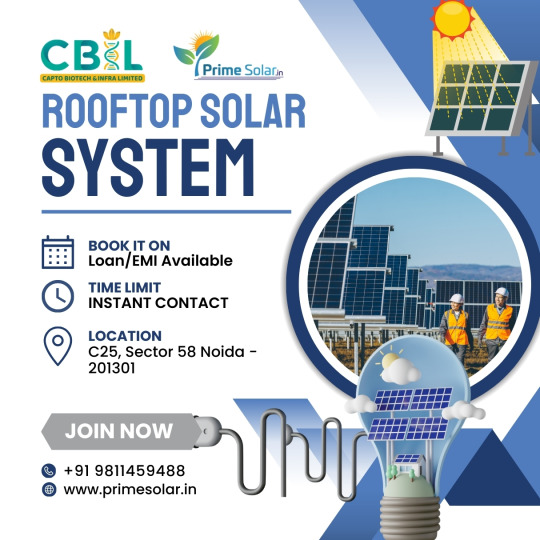
Embrace the Solar Revolution with Prime Solar Solutions! Secure your tomorrow by going solar today and enjoy an exclusive offer: Pay just 20% as a downpayment for your project!
Contact us at Call/WhatsApp: (+91 9811459488) to learn more and join the movement towards sustainable energy.
#SolarPanelCleaningRobot#SolarPanel#NewEnergy#SolarSystem#EnergyStorage#SolarEnergyStorage#PortablePowerGenerator#PowerGeneration#SolarPowerSystem#LithiumBattery#LiFePO4Battery#Battery#SolarEnergy#Solar
1 note
·
View note
Text
9 Things to Keep in Mind Before Solar Panel Installation
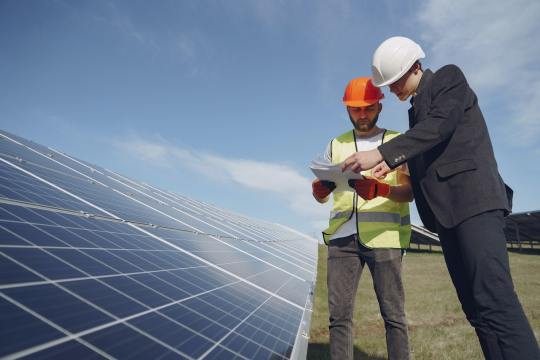
Solar power is the new way to go. Solar panels are a great option whether you're trying to reduce your carbon footprint, save money on energy bills, or want a cool new technology in your home. But before signing up for the installation of these panels, you should know a few things about how they work and how they'll fit into your life. Here are ten tips that will help you make an informed decision:
Make Sure You Understand The Right Location for Solar Panels
South-facing panels are the most efficient but don't need to be mounted on a rack or roof.
Around 30 degrees, solar panels should be tilted at an angle.
If you're installing your solar array and want to mount it on a pole in your backyard, check with local authorities first because some areas have regulations against this type of installation.
Check Your Roof
A solar panel installation is not a DIY job; you'll need to hire an experienced crew to do it right. However, before you give them the green light, there are some things you should know about your roof:
Roof materials--wood shingles or asphalt? Steel tiles? Both material is fine, but each has its own set of pros and cons when it comes to installing solar panels. If you have an all-metal roof (steel or aluminium), for example, that may make it more difficult for water runoff from rain storms or snow melting in winter months; likewise, if your home has wood siding that needs extra care during installation because of possible damage during drilling holes into the structure below. But don't worry too much about these issues--they're quickly addressed by professionals who have experience working with different types of surfaces on homes like yours!
You Also Need to Know Electrical, Ventilation, and Structural Requirements
You also need to know electrical, ventilation and structural requirements. You might be surprised to find out that there are many things to consider when installing solar panels on your roof. For example, your roof must be free from shade or obstructions so that the solar panels can get maximum sunlight. Also, you'll want enough space to install many boards simultaneously (e.g., if you choose a system with 20 kilowatts).
You should also make sure that there's enough room for connecting cables within the house without causing any damage or blocking windows or doors in any way; this could be especially important if you live in an older home where walls may not have been built as well as modern ones do today!
Know Your Electric Bill
Understanding your electric bill will help you determine how much energy you use and how much it costs. You can use this information to better decide about solar panel installation.
If you're unsure how much electricity you use, ask for a meter reading from the utility company or get one yourself. Then, calculate how much money is spent on each kilowatt-hour (kWh). For example, if your monthly bill says that it costs $100 per month for 1,000 kWh of electricity ($0.10/kWh), then it would cost $1 per day ($365 days in a year) or $365 per year just to run all of the appliances in an average household--not including any other sources of power such as heating or cooling systems!
Calculate How Much Energy You'll Use
You need to know how much energy your home uses to calculate the size of your solar panel system. The easiest way to do this is by looking at your electric bill, which will list the electricity used over a given period (usually one month). If you need access to this information, some online calculators can help estimate how many watts per hour a home uses based on information provided about its size and features.
By calculating how much power is needed from each solar panel for them all together to produce enough electricity for an average home's needs, you can then determine what size system will be required for it not only to meet but exceed those requirements--ensuring reliability and efficiency during peak hours when demand is highest.
Size of the Solar Panel System
Solar panel system sizes depend on how much energy you use. The wattage of a solar panel system is determined by its area, not its physical dimensions, so it's essential to know how many watts you need before deciding on a size.
You can calculate the wattage of your home using this equation:
Total electrical load (kilowatts) = actual square footage x average daily kWh per square foot.
For example, if your house has 2,000 square feet and uses 1 kWh per sqft per day (1kWh/sqft/day), its total electrical load would be 2 kilowatts (2kW).
Assuming that there are no significant losses in system efficiency (i.e., "inefficiencies") means that every kW of installed capacity should produce around 2kWh/day--or about 1MWh annually.
Understand The Tax Credits and Incentives
Tax credits and incentives are the two main ways governments encourage the use of renewable energy. They're both available at the federal level but can also be found in many states and localities across the United States.
Tax credits are straightforward: If you install solar panels on your home, you can deduct some money from your taxes based on how much money it costs to purchase them (plus installation). It's basically like getting a discount for buying something with cash instead of a credit card--except in this case, and it's a discount because it lowers your overall tax burden rather than just giving up interest charges!
Tax incentives work similarly but are usually only available if there's an existing incentive program in place; they don't always require any upfront investment from homeowners or businesses--instead, they offer financial assistance after the installation has been completed.
Talk to a professional who can help you make the right decisions for your home or business!
Talk to a professional who can help you make the right decisions for your home or business!
The cost of solar panel installation. This can vary depending on where you live and the roofing material on your home.
The size of the solar panel system needed for your home or business depends on how much energy it uses, how many people live there and whether they have any electric cars that need charging (the larger these things are, the more efficient).
Tax credits and incentives from local governments may also offset some costs (e.g. if they provide tax credits). Paying attention to this information will ensure you that whatever price tag is manageable before deciding to install solar panels!
Ask About Maintenance and How You Will Know When Something Needs Fixing or Replacing
When considering solar panel installation Melbourne, asking about maintenance and how you will know when something needs fixing or replacing is essential. How often do the panels need to be maintained? Do they come with a warranty that covers repairs and replacements? If so, how long does this protection last? Do I have to buy the maintenance services from the same company that installed my system? What exactly will they do to maintain my system? Clean them occasionally, check for any damage or defects in wiring, etc., and replace parts as needed.
Conclusion
In conclusion, solar panel installation can be an excellent choice for your home or business. It's essential to do your homework and research all the details before deciding so that you know what you're getting into. These tips will help make the process easier for you!
0 notes
Text
SOLAR PANELS
Green Home Systems Provides Variety Of Solar Panels
Panasonic EPV360K EverVolt Black Series
Panasonic EverVolt™ Black Series solar modules produce more power over the long haul fueled by industry-leading conversion efficiency and low degradation rate. Superior module efficiency of 20.6% (360W) and 20% (350W) and greater high-temperature performance deliver a high-output renewable energy source for residential solar systems.
Available in 360-watt and 350-watt models, EverVolt Black Series panels are covered by a complete 25-year warranty from one of America’s most trusted brands.
Read More
#SolarPanelInstaller#RenewableEnergy#SolarPower#CleanEnergy#GreenEnergy#SolarInstallation#SolarEnergy#Sustainability#EcoFriendly#GoSolar#SolarSolutions#SolarPV#EnergyEfficiency#SolarInstaller#SolarPowerSystem#SolarPanelInstallation#SolarTech#SolarIndustry#SolarJobs#SolarLife
1 note
·
View note
Text
#solarpanelsmelbourne#affordable5kwsolarsystempricevictoria#accoupledbatteryreservoir#6.6kwsolarpanelniddrie#bestcommercialsolarsystemoakleigh#solarpowersystem#SolarPanelSystemMelbourne#SolarPowerSystemMelbourne#4kWsolarpanelsystemMelbourne#SolarPanelSpringvale#SolarPanelSystemSpringvale#SolarPowerSystemSpringvale#5kWSolarpanelsystem#SolarPanelOakleigh#SolarPanelSystemOakleigh#SolarPowerSystemOakleigh#10kWsolarpanelsystemOakleigh#SolarPanelOfficer#SolarPanelSystemOfficer#SolarPowerSystemOfficer#ResidentialSolarPanelSystemOfficer#SolarPanelMorwell#SolarPanelSystemMorwell#SolarPowerSystemMorwell#CommercialSolarPowerSystemMorwell
0 notes